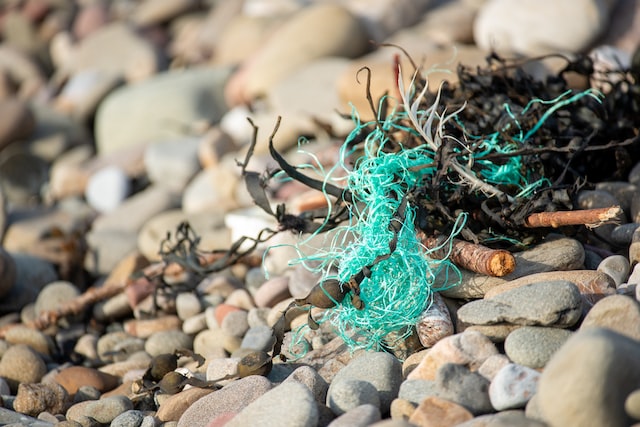All official European Union website addresses are in the europa.eu domain.
See all EU institutions and bodiesPlastics are everywhere — from food packaging to healthcare, construction materials, furniture and textiles. They are, unfortunately, also bad for the environment. They are not only polluting the seas and land, but also contributing to climate change and air emissions.
Plastic is a relatively new invention in human history with some of the first examples dating back to the late 1800s, but its versatility and low production cost have made it one of the most widely used materials of modern times. In western Europe, the average annual plastic consumption is around 150kg per person — more than twice the global average of 60kg.
Global consumption of plastic is accelerating. Over half of the plastic production ever manufactured has been produced since 2000 and we are set so double our current global annual production by 2050. Only about an estimated 9% of the plastics ever produced have been recycled and 12% have been incinerated. The remainder is either still in use or has either been disposed of in landfills or released into the environment, including the oceans.
The durability of plastics means that discarded items remain in the environment for generations. Environmental impacts from discarded plastics include littering, leaching of toxic components, and the contamination of ecosystems and the food chain with microplastics — which can end up eventually in humans with unknown health effects.
Besides polluting the environment, plastic production contributes to climate change: annual emissions related to plastic production in the EU amount to around 13.4 million tonnes of CO2, or about 20% of the chemicals industry’s emissions in the European Union.
New EEA monitoring tool reviews progress on plastics circularity
Evidence relating to the circular economy is fragmented or only partially covered through data and knowledge but is needed to assess the state of circularity. The Circularity Metrics Lab complements other circularity monitoring frameworks by presenting ‘additional’ evidence on circularity.
The CML plastics module provides metrics that do not necessarily have the benefits of broad geographical coverage or long time series and provide room for more ‘experimental’ data sources.
A key purpose for CML plastics is to present a diverse group of metrics to reveal the status and trends for the circular plastics economy in Europe.


Marine litter: the majority is plastic
Land-based sources account for 80% of marine litter and approximately 85% of it is plastic. This is a big problem because of plastic’s impact on marine life and human health via the food chain. The persistent nature of plastic means that it can last up to 500 years in some cases.
Plastic packaging and small plastic items comprise nearly 80% of plastic waste and are a common sight on European beaches. Although the amount of waste continues to increase, current waste management capacity is limited. Most plastic items that are used and thrown away are either recycled, incinerated or properly stored in waste facilities. However, a mismanaged part of that waste continues to find its way to our seas and pollute them.
How does plastic impact human health?
Our growing exposure to plastics and the chemicals they contain can put human health at risk.
The annual intake of microplastics by humans has been estimated to range from 70,000 to over 120,000 particles. Most of these particles are inhaled through air; food and drink constitute the second largest source. People who predominantly drink bottled water may ingest an additional 90,000 microplastic particles a year. Human exposure to microplastics through drinking water is assumed to be low in Europe, but there is not enough evidence to confirm this.
Our zero pollution monitoring assessment takes a look at how our increasing use of plastics creates more pollution, which impacts both ecosystem and human health in one of its cross-cutting stories.

Microplastics from textiles: towards a circular economy for textiles in Europe

Europeans, exposed to bisphenol A above health safety levels
Population exposure to the synthetic chemical Bisphenol A (BPA), which is used in everything from plastic and metal food containers to reusable water bottles and drinking water pipes in Europe is well above acceptable health safety levels, according to updated research data. This poses a potential health risk to millions of people.
Data collected from an EU human biomonitoring study found that up to 100% of the people taking part from 11 EU countries were likely exposed to the chemical above safe health thresholds.
How to move towards sustainable plastics?
Circular and sustainability practices throughout the lifecycle of plastics can help reduce greenhouse gas emissions, pollution and waste. Many such good practice examples already exist and would need to be scaled up to enable a circular plastics economy in Europe.
Our briefing 'Pathways towards circular plastics in Europe' aims to inspire businesses, policymakers and citizens to make the production and consumption of plastics more circular and sustainable. The briefing is based on an underpinning technical report by the EEA’s European Topic Centre on Circular Economy and Resource Use.

